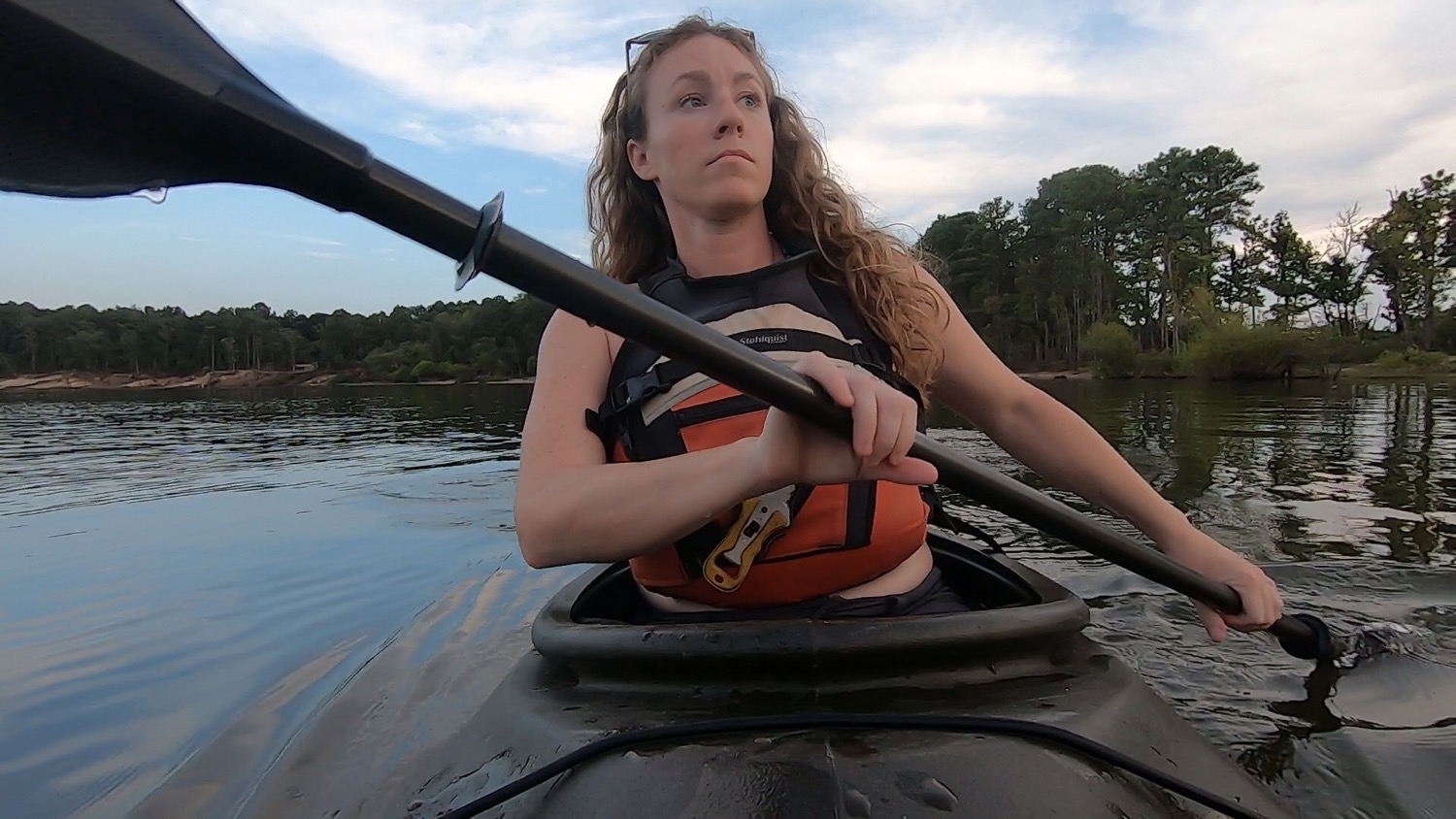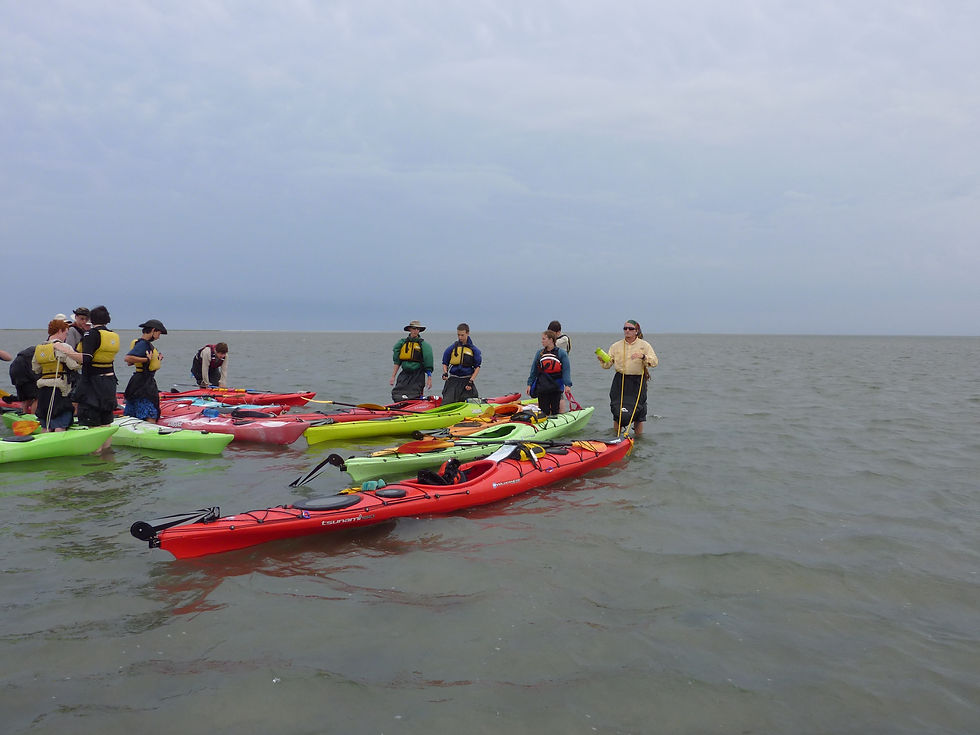Beyond Leave No Trace
- Ali Williams

- Jul 30, 2021
- 3 min read
Updated: Aug 11, 2021

Wisps of hair that had escaped my braid from three days in the wild suddenly brushed my cheeks in warning. My conversation with a fellow guide stopped short mid sentence. We turned to look south simultaneously. The wind had picked up and it was time to go.
Our rest on a sandbar, submerged in ankle deep water, miles from land in all directions, was cut shorter than I had hoped. We were exhausted from a morning being chased through the sound by thunderstorms, and it was time to run again.
I was leading sea kayaking expeditions for the summer. It was the first time I experienced what I now call integration into my environment. Integration felt deeper than awareness. It felt rather than thought. It was a liminal space. My senses bloomed, sending a constant stream of information to my conscious and subconscious. After months of immersion, I felt tuned in with the rhythms and cycles of that place. The feel of subtle changes cued my thinking
brain to make decisions.

It was the closest I had ever come to integration with a wild place. Though I was an outside loving child, I had never spent months on end living outdoors, moving across terrain.
I was deeper in relation with the wild than I had ever been, and yet compared to the humans of the not-so-distant past who lived here, my integration was shallow and stunted.
I didn’t know how the fish moved with the tides, what grasses made the best cordage or how they felt twisting between fingers. I didn’t know which plants around me were edible, or how to craft a fish hook from a bone on the beach. I was only in relation with the land as deep as my need.
Several factors inhibited this deeper relation with this place. Modern equipment, crafted far away from synthetic materials eliminated my need to know which grasses made good cord. Itineraries governed by flights and vacation time meant my participants couldn’t linger to explore further. And lastly, but most importantly, these narrow bits of land between sound and sea balanced precariously between survival and oblivion. We needed to tread lightly in this place so as not to tip the scales toward demise.
In bringing our synthetic tents and sleeping bags into wild places, we are trading destruction in our wild ‘backyards’ for destruction out of sight and out of mind. This destruction happens beyond the borders of our homelands and lifetimes. The pollution from the creation of these products accumulates mostly in the places where they are made- poorer countries in Asia with lower paid workers, lax environmental regulations and often dangerous working conditions. The synthetics they are made of take years to degrade and accumulate in landfills once a better version debuts on the market. We see their carcasses accumulate in our landfills, but we can’t see the micro-plastics they leech into our waterways as they degrade.
The pollution from outdoor products is a drop in a bucket compared to the pollution from all the other cheap manufacturing we outsource to Asia. We can justify it this way, and by looking at the destruction not having them would bring to our own wild places.
Eliminating the use of tents, sleeping pads, stoves and freeze dried meals would absolutely do great harm to our public lands with so many people recreating in those spaces. But using them prevents us from the opportunity to thrive in the wild and stunts our ability to integrate into landscape. We need places where we get to commune with our ancient humanity and learn where our place is in the wild.
Further Reading:
Further Listening:




Comments